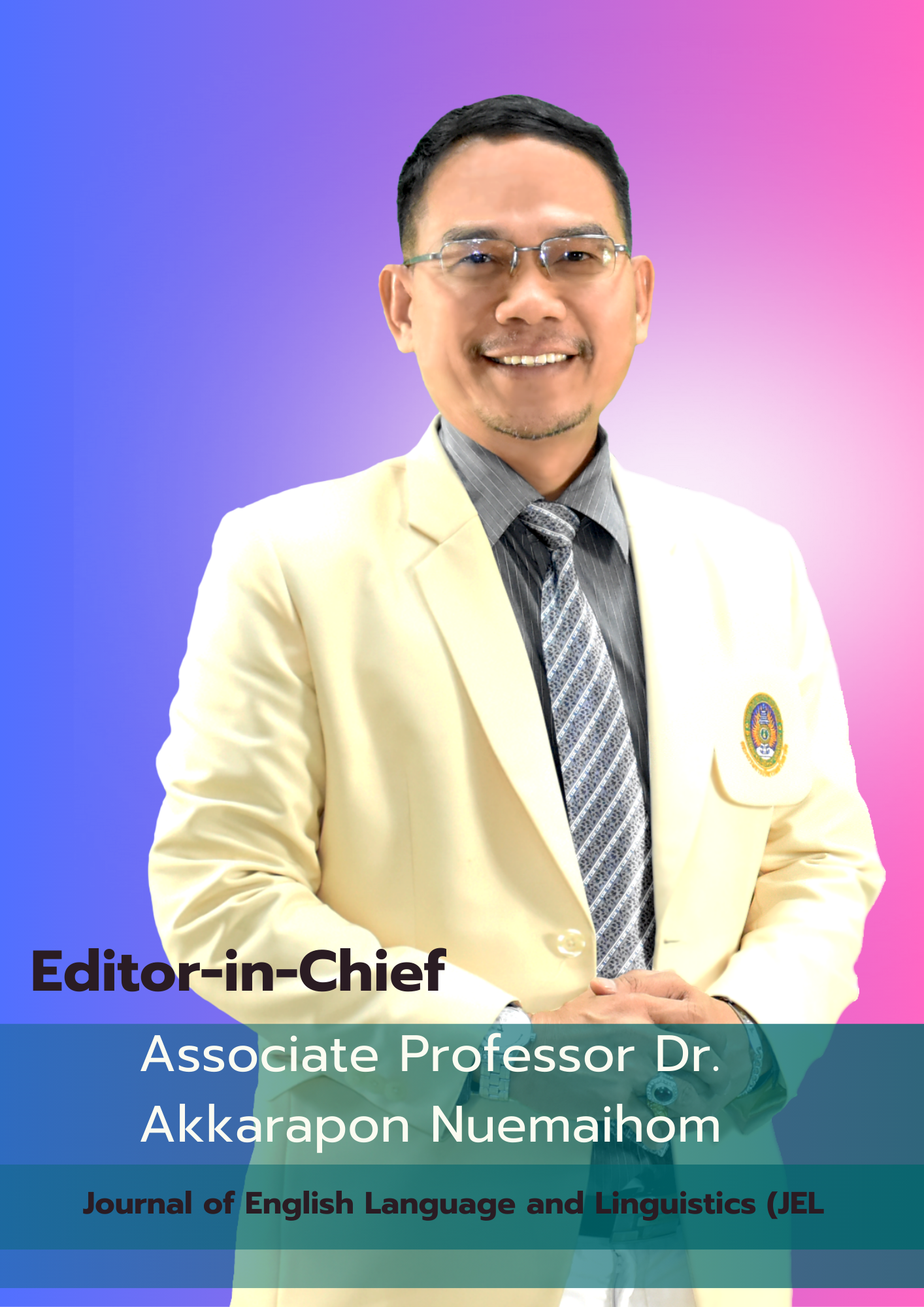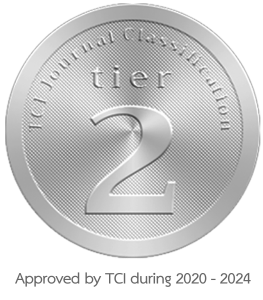Lead news coverage of Buddhist monks in the Nation online newspaper: A syntactic analysis
DOI:
https://doi.org/10.62819/jel.2024.282Keywords:
Buddhist monks, syntactic analysis, the Nation online newspaperAbstract
The objectives of this research were to analyze the syntactic sentence types, phrase-level syntactic structures in subjects and predicates, and word-level structures within the same contexts in the lead news coverage of Buddhist monks in the Nation Online Newspaper. The qualitative study utilized data collected from The Nation's website over a decade (2013–2023) to analyze sentence types categorized into simple, compound, complex, and compound-complex, revealing a preference for simple (51.79%) and complex sentences (39.29%), indicating a journalistic inclination towards clarity and in-depth information presentation. Phrase-level analysis highlighted a dominance of Noun Phrases (43.26%) and Prepositional Phrases (32.01%), underscoring their role in establishing relational context and subjects in sentences. Word-level analysis revealed a significant use of determiners (44.07%) and nouns (38.45%), emphasizing their essential roles in conveying meaning and specifying noun phrases. The study's findings suggested a strategic balance in The Nation's syntactic choices, reflecting a nuanced approach to ensuring readability while providing comprehensive information, aligning with broader trends in digital journalism. This research contributed to the understanding of syntactic strategies in journalism, particularly in the context of online media and its representation of religious figures.
References
Banko, M., Cafarella, M. J., Soderland, S., Broadhead, M., & Etzioni, O. (2007). Open information extraction from the web. In Proceedings of the 20th International Joint Conference on Artificial Intelligence (pp.2670-2676). Hyderabad, India.
Brown, T., & Davis, J. (2021). The agenda-setting power of lead news: An analysis of public discourse influence. Journal of Media Studies, 37(4), 234-250.
Chen, Y., & Wang, L. (2020). Narrative framing of Buddhist monks in English newspapers: A cross-cultural analysis. Journal of Media and Religion, 19(3), 112-128.
Chiang, D. (2007). Hierarchical phrase-based translation. Computational Linguistics, 33(2), 201-228.
Doe, J. (2019). Syntactic structures and reader engagement in English newspapers. Journal of Media Linguistics, 12(3), 234-250.
Endu, P. (2019). An analysis of English sentence structures used in lead news in Thai educational news in online Bangkok post. Wiwitwannasan Journal of Language and Culture, 3(1), 29–54.
Green, L., Thompson, R., & Patel, M. (2019). Editorial decisions in lead news selection: A case study approach. Journalism Practice Review, 15(3), 322-339.
Jones, M., & Kumar, R. (2018). The digital evolution of English newspapers: Audience engagement and interactive features. Journal of Digital Media & Policy, 29(2), 165-183.
Kamlangharn, S. (2003). English syntactic structures used in sports news headlines in the daily English language newspapers published in Thailand. Faculty of Humanities and Social Sciences, Burapha University.
Karakoç,D., & Köse, G. D. (2017).The impact of vocabulary knowledge on reading, writing and proficiency scores of EFL learners. Journal of Language and Linguistic Studies, 13(1), 352-378.
Kim-Ing, S. (2012). Analysis of English sentence structure in star biographic column in student weekly magazine. Faculty of Humanities and Social Sciences, Burapha University.
Kitaev, N., Klein, D., & Petrov, S. (2018). Constituency parsing with a self-attentive encoder. In Proceedings of the 56th Annual Meeting of the Association for Computational Linguistics (pp. 2676-2686). Melbourne, Australia. Association for Computational Linguistics.
Klein, D., & Manning, C. D. (2018). Accurate unlexicalized parsing. In Proceedings of the 56th Annual Meeting of the Association for Computational Linguistics (Long Papers), (pp.2676-2686). Melbourne, Australia: Association for Computational Linguistics.
Klongsungnern, B. (1999). An analysis of headlines of the Bangkok post and the nation on the meaning of vocabulary and the structures of sentences and phrase. Graduate School, Thaksin University.
Koopman, H., Sportiche, D., & Stabler, E. (2013). An introduction to syntactic analysis and theory. Wiley-Blackwell.
Kübler, S., McDonald, R., & Nivre, J. (2009). Dependency parsing (synthesis lectures on human language technologies). Morgan and Claypool Publishers.
Patel, K., & Singh, L. (2022). Lead news in the digital age: An exploration of multimedia storytelling. Digital Journalism Studies, 8(1), 60-75.
Pholprasert, C. (2020). The language analysis of syntactic structures embedded in TOEFL reading comprehension passages and the language achievement of Kasetsart University students both prior to and following their undergoing a one-semester TOEFL course. Kasetsart Journal of Social Sciences, 15(1), 66–71.
Post Publishing Co., Ltd. (Plc). (2014). Annual report in 2014. Retrieved August 27, 2018, from https://www.bangkokpost.co.th/annualreport/annual2014/AnnualReport2557_THAI_FINAL.pdf
Saengsang, A., & Sengchuen, N. (2022). News writing format of English summary lead from the COVID-19 situation in the Bangkok post and The nation online newspaper. Aksara Pibul Journal, 3(2), 117–113.
Smith, J. (2019). Ethical considerations in the media portrayal of Buddhist monks. Journal of Journalism Ethics, 15(1), 77-92.
Smith, L., & Johnson, M. (2020). Political discourse and syntactic complexity in English newspapers. Discourse & Society, 31(4), 421-437.
Socher, R., Perelygin, A., Wu, J., Chuang, J., Manning, C. D., Ng, A. Y., & Potts, C. (2013). Recursive deep models for semantic compositionality over a sentiment treebank. In Proceedings of the 2013 Conference on Empirical Methods in Natural Language Processing, (pp.1631–1642). Seattle, Washington, USA. Association for Computational Linguistics.
Tamrongsat, P. (1985). English in newspapers. Silakorn University.
Thompson, H. (2020). Framing and emotional response in the presentation of lead news. Communication Research Journal, 42(2), 189-207.
Thompson, H., & Lee, D. (2020). Social media's impact on the dissemination of news: An examination of online English newspapers. Media and Communication Studies, 38(4), 560-578.
Thompson, R., & Patel, S. (2021). Headline syntax: Phrase-level structures in English newspapers. Media Linguistics Review, 29(3), 134-156.
Vaswani, A., Shazeer, N., Parmar, N., Uszkoreit, J., Jones, L., Gomez, A. N., ... & Polosukhin, I. (2017). Attention is all you need. In Advances in neural information processing systems of 31st Conference on Neural Information Processing Systems (NIPS 2017) (pp.5998-6008). Long Beach, CA, USA.
Williams, A., & Clarke, B. (2022). Sentence types and their communicative functions in English newspapers. Journal of Applied Linguistics, 33(4), 210-230.
Williams, G. (2019). Adapting content for online newspapers: A study of English media. Online Journalism Review, 17(1), 45-62.
Worawut, K., & Endoo, P. (2020). Study of stylistics in political news headlines of BBC newspapers: An analysis of grammatical structures. In Proceedings of the 11th Rajamangala Surin National Conference “Research and Innovation for New Normal” (pp.92-103). Rajamangala University of Technology Isan Surin Campus.
Yunchalard, N., & Punkasirikul, P. (2023). Underrepresenting “their” side of the story: A critical discourse analysis of online English headlines and leads of news on the Karen minority. REFLections, 30(2), 337–362.



















